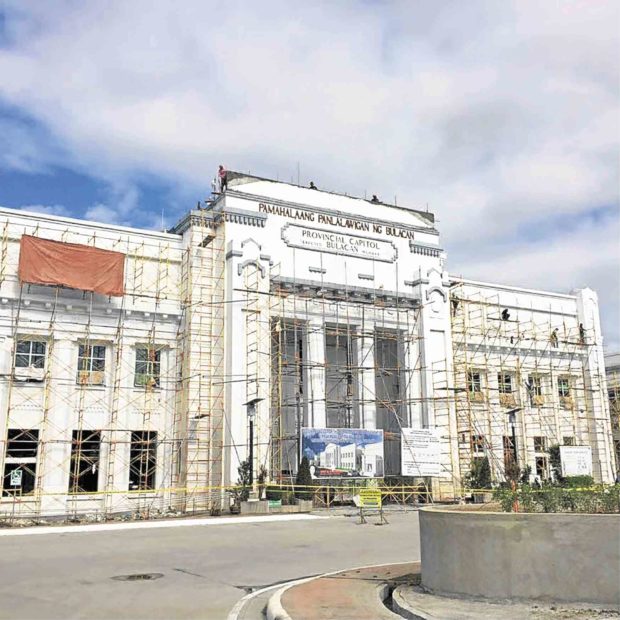
Bulacan heritage advocates have criticized the renovation of the provincial capitol building in Malolos, alleging it has violated the artistic vision and integrity of its original architect, Juan Arellano.
The renovation was done during the incumbency of former Gov. Wilhelmino Sy-Alvarado, who is now vice governor.
In letters to the National Commission for Culture and the Arts (NCCA) last June and this month, Melanio Martinez Jr. criticized the conversion of the building’s triangular pediment to a parapet and the addition of a LED billboard on top of the latter.
Chair Virgilio Almario of the NCCA later informed Martinez that his letter had been forwarded to the commission’s policy formulation and programming division “for appropriate action.”
Alejo Santos bridge
In Baliuag, Bulacan, the Gen. Alejo Santos Bridge, commonly known as the Baliuag-Bustos Bridge, spanned the Angat or Baliuag River and was demolished to give way to a new concrete bridge.
The steel-span bridge, named after the World War II hero and former Bulacan governor who became a surprise presidential candidate against Ferdinand Marcos in 1981, was constructed in 1968. It is listed in the Philippine Registry of Cultural Property of the NCCA.
Architect Wilmer Godoy of the National Historical Commission of the Philippines (NHCP) said the 50-year-old bridge was protected under the National Cultural Heritage Law of 2009 and should be a presumed important cultural property, particularly if deemed significant in terms of its history, architecture and aesthetics.
There are ways for it to be saved, Godoy said, such as retrofitting and the construction of a separate bridge.
Bulacan historian Jaime Corpuz agreed. He said the bridge should have been repaired and preserved instead of being demolished.
“We must remember that a bridge like this is our connector to our past, our foundation as a Bulakenyo, Filipino,” he said.
“Let us treat this bridge as highly important as a Baroque church,” Corpuz added.
Clearance
In April 2016, Department of Public Works and Highways Region 3 Director Antonio Molano Jr. wrote then NHCP chair Maria Serena Diokno asking for clearance for the demolition. He said a study conducted by his agency’s Bureau of Design “severe defects” and argued the best option was for the bridge to be torn down.
Ludovico Badoy, NHCP’s executive director, later told Molano the NHCP did not find any national historical significance in the bridge so the query was forwarded to National Museum (NM) Director Jeremy Barns to determine if it had cultural or architectural importance.
In a message to the Inquirer, Barns said NM posed no objection to the demolition since its supposed significance had not been established.













































